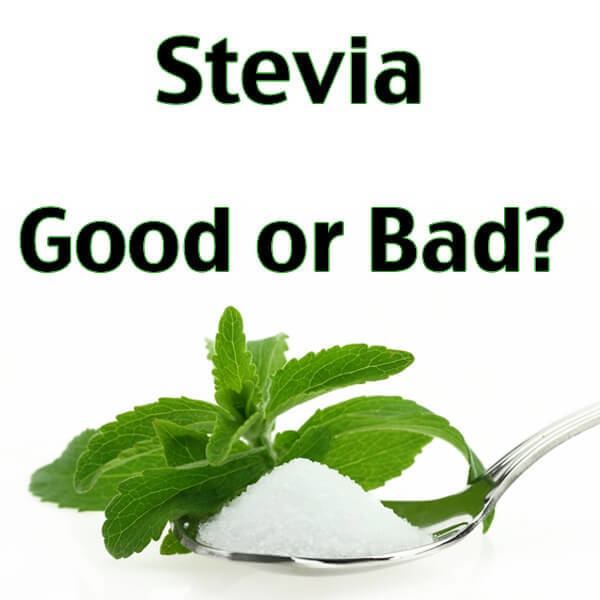 | ||
Similar Splenda, Sugar, Saccharin, Fructose, Table sugar | ||
Are sugar substitutes like stevia safe healthy food
Stevia (/ˈstiːviə/, /ˈstiːvjə/ or /ˈstɛviə/) is a sweetener and sugar substitute extracted from the leaves of the plant species Stevia rebaudiana.
Contents
- Are sugar substitutes like stevia safe healthy food
- Discovery
- Commercial use
- Industrial extracts and derivatives
- Mechanism of action
- Safety and regulations
- Availability and legal status by country
- Extraction
- Controversy
- References
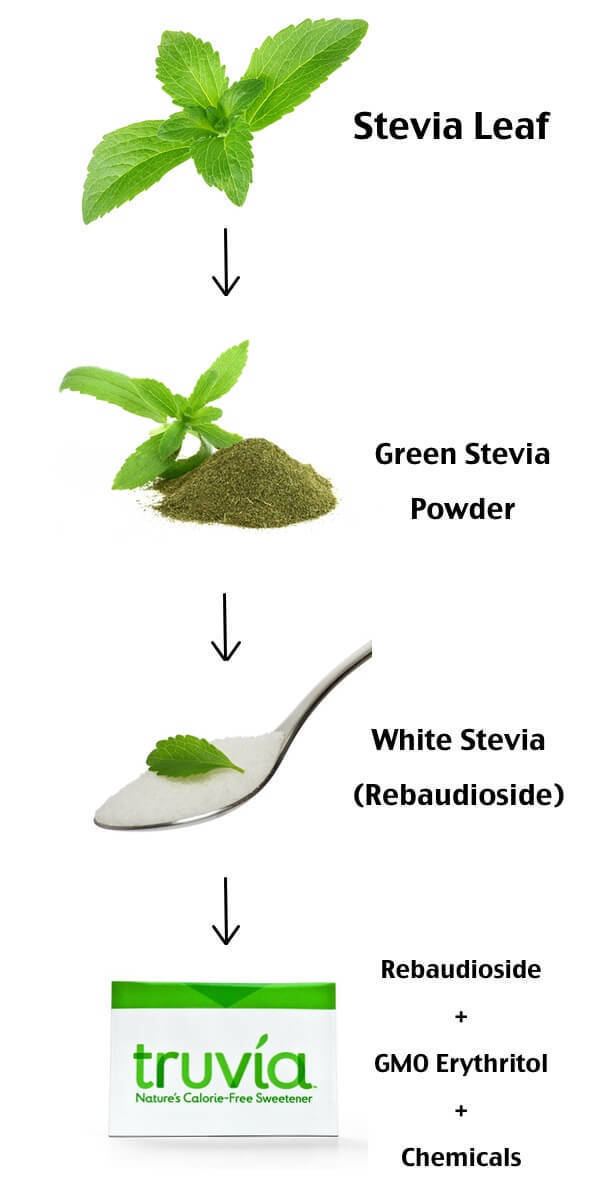
The active compounds of stevia are steviol glycosides (mainly stevioside and rebaudioside), which have up to 150 times the sweetness of sugar, are heat-stable, pH-stable, and not fermentable. These steviosides have a negligible effect on blood glucose, which makes stevia attractive to people on carbohydrate-controlled diets. Stevia's taste has a slower onset and longer duration than that of sugar, and some of its extracts may have a bitter or licorice-like aftertaste at high concentrations.
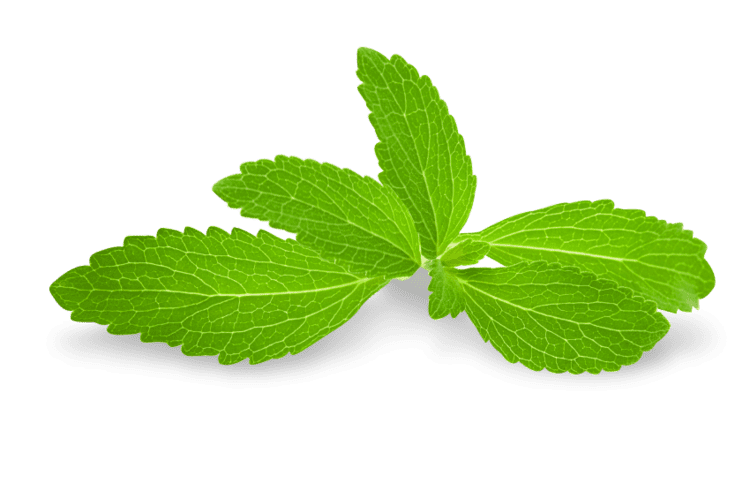
The legal status of stevia extracts as food additives and supplements varies from country to country. In the United States, stevia was banned in 1991 after early studies found that it might be carcinogenic; after additional studies, the FDA approved some specific glycoside extracts for use as food additives in 2008. The European Union approved stevia additives in 2011, and in Japan, stevia has been widely used as a sweetener for decades.
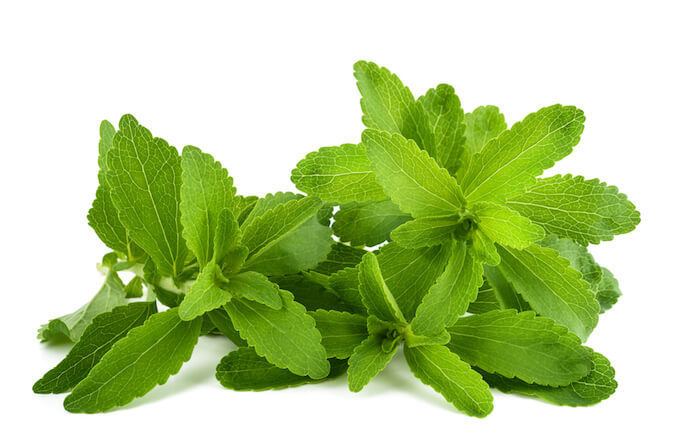
Discovery
The plant Stevia rebaudiana has been used for more than 1,500 years by the Guaraní peoples of South America, who called it ka'a he'ê ("sweet herb"). The leaves have been used traditionally for hundreds of years in both Brazil and Paraguay to sweeten local teas and medicines, and as a "sweet treat". The genus was named for Spanish botanist and physician Petrus Jacobus Stevus (Pedro Jaime Esteve 1500–1556) a professor of botany at the University of Valencia.
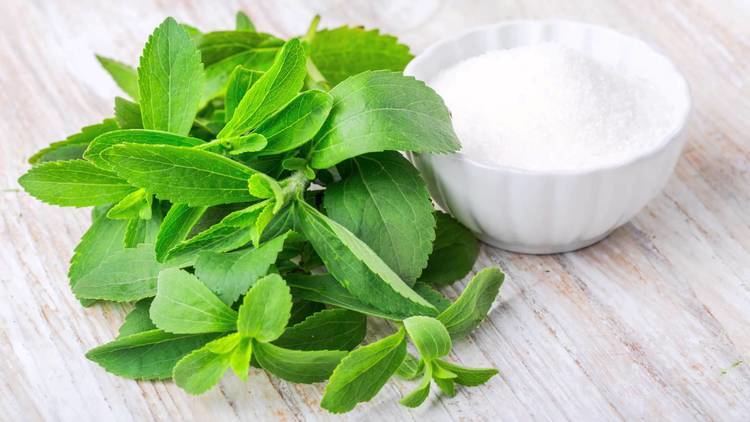
In 1899, Swiss botanist Moisés Santiago Bertoni, while conducting research in eastern Paraguay, first described the plant and the sweet taste in detail. Only limited research was conducted on the topic until in 1931 two French chemists isolated the glycosides that give stevia its sweet taste.
The exact structure of the aglycone (steviol) and of the glycoside were published in 1955.
Commercial use
In the early 1970s, sweeteners such as cyclamate and saccharin were gradually decreased or removed from a variant formulation of Coca-Cola. Consequently, use of stevia as an alternative began in Japan, with the aqueous extract of the leaves yielding purified steviosides developed as sweeteners. The first commercial stevia sweetener in Japan was produced by the Japanese firm Morita Kagaku Kogyo Co., Ltd. in 1971. The Japanese have been using stevia in food products and soft drinks, (including Coca Cola), and for table use. In 2006, Japan consumed more stevia than any other country, with stevia accounting for 40% of the sweetener market.
In the mid-1980s, stevia became popular in U.S. natural foods and health food industries, as a noncaloric natural sweetener for teas and weight-loss blends. The makers of the synthetic sweetener NutraSweet (at the time Monsanto) asked the FDA to require testing of the herb. In 2007, the Coca-Cola Company announced plans to obtain approval for its stevia-derived sweetener, Rebiana, for use as a food additive within the United States by 2009, as well as plans to market Rebiana-sweetened products in 12 countries that allow stevia's use as a food additive. In May 2008, Coca Cola and Cargill announced the availability of Truvia, a consumer brand stevia sweetener containing erythritol and Rebiana, which the FDA permitted as a food additive in December 2008. Coca-Cola announced intentions to release stevia-sweetened beverages in late December 2008. From 2013 onwards, Coca-Cola Life, containing stevia as a sweetener, was launched in various countries around the world.
Shortly afterward, PepsiCo and Pure Circle announced PureVia, their brand of stevia-based sweetener, but withheld release of beverages sweetened with rebaudioside A until receipt of FDA confirmation. Since the FDA permitted Truvia and PureVia, both Coca Cola and PepsiCo have introduced products that contain their new sweeteners.
As of 2006, China was the world's largest exporter of stevioside products.
Industrial extracts and derivatives
Stevia extracts and derivatives are produced industrially and marketed under different trade names.
Mechanism of action
Glycosides are molecules that contain glucose and other non-sugar substances called aglycones (molecules with other sugars are polysaccharides). The tongue's taste receptors react to the glucose in the glycosides: those with more glucose (rebaudioside) taste sweeter than those with less (stevioside). Some of the tongue's bitter receptors react to the aglycones.
In the digestive tract, rebaudiosides are metabolised into stevioside. Then stevioside is broken down into glucose and steviol. The glucose released in this process is used by bacteria in the colon and not absorbed into the bloodstream. Steviol cannot be further digested and is excreted.
Safety and regulations
A 2009 review summarized the basic research in which steviosides and related compounds are being tested for possible anti-disease actions, with no effect yet demonstrated in humans. A 2011 review found that the use of stevia sweeteners as replacements for sugar might benefit people with diabetes, children, and those wishing to lower their intake of calories.
Although both steviol and rebaudioside A have been found to be mutagenic in laboratory in vitro testing, these effects have not been demonstrated for the doses and routes of administration to which humans are exposed. Two 2010 review studies found no health concerns with stevia or its sweetening extracts. However, experts have noted a "general lack of long-term studies on stevia's use and effects".
The WHO's Joint Experts Committee on Food Additives has approved, based on long-term studies, an acceptable daily intake of steviol glycoside of up to 4 mg/kg of body weight. In 2010, The European Food Safety Authority established an acceptable daily intake of 4 mg/kg/day of steviol, in the form of steviol glycosides. Meanwhile, the Memorial Sloan Kettering Cancer Center warns that "steviol at high dosages may have weak mutagenic activity," and a review "conducted for" the Center for Science in the Public Interest notes that there are no published carcinogenicity test results for rebaudioside A (or stevioside) in mice, and that they are needed and important
Availability and legal status by country
The plant may be grown legally in most countries, although some countries restrict its use as a sweetener. The legally allowed uses and maximum dosage of the extracts and derived products vary widely from country to country.
Extraction
Rebaudioside A has the least bitterness of all the steviol glycosides in the Stevia rebaudiana plant. To produce rebaudioside A commercially, stevia plants are dried and subjected to a water extraction process. This crude extract contains about 50% rebaudioside A. The various glycosides are separated and purified via crystallization techniques, typically using ethanol or methanol as solvent.
Controversy
In 1991, after receiving an anonymous industry complaint, the United States Food and Drug Administration (FDA) labeled stevia as an "unsafe food additive" and restricted its import. The FDA's stated reason was "toxicological information on stevia is inadequate to demonstrate its safety".
Arizona congressman Jon Kyl called the FDA's action against stevia "a restraint of trade to benefit the artificial sweetener industry". To protect the complainant, the FDA deleted names in the original complaint in its responses to requests filed under the Freedom of Information Act.
Stevia remained banned until after the Dietary Supplement Health and Education Act of 1994 forced the FDA in 1995 to revise its stance and to permit stevia to be used as a dietary supplement, although not as a food additive – a position that stevia proponents regarded as contradictory as they felt it simultaneously labeled stevia as safe and unsafe, depending on how it was sold.
Early studies prompted the European Commission in 1999 to ban stevia's use in food in the European Union pending further research. In 2006, research data compiled in the safety evaluation released by the World Health Organization found no adverse effects.
In December 2008, the FDA gave a "no objection" approval for GRAS status to Truvia (developed by Cargill and the Coca-Cola Company) and PureVia (developed by PepsiCo and the Whole Earth Sweetener Company, a subsidiary of Merisant), both of which use rebaudioside A derived from the stevia plant. However, the FDA said that these products are not stevia, but a highly purified product.
In 2012, the FDA posted a note on its website regarding crude stevia plants:
FDA has not permitted the use of whole-leaf stevia or crude stevia extracts because these substances have not been approved for use as a food additive. FDA does not consider their use in food to be GRAS in light of reports in the literature that raise concerns about the use of these substances. Among these concerns are control of blood sugar and effects on the reproductive, cardiovascular, and renal systems.
